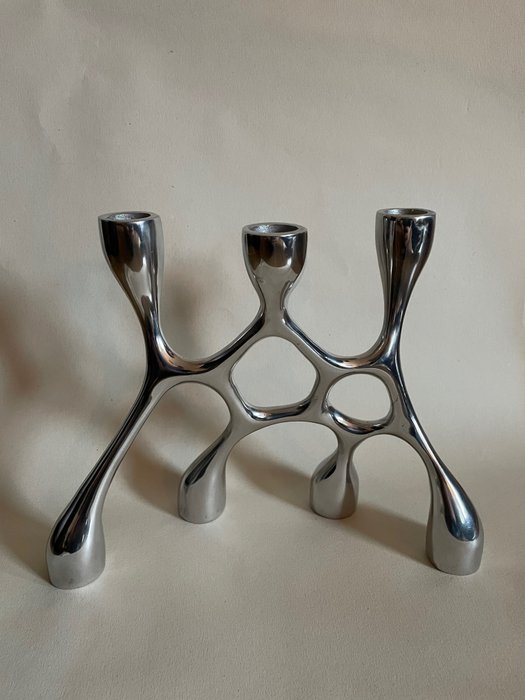
The modernist German designer Marianne Brandt was one of the few women associated with the Bauhaus to make her reputation outside the traditional arts and crafts sectors related to women, such as textiles, weaving and pottery. Her metalware tea and light fittings from the 1920s have become widely known, many of which were produced under licence from the mid-1980s by the Italian company Alessi. She created various stylish everyday items using modern and conventional techniques, ranging from electroplated brass tea infusers to chrome desk sets, ceilings, and bedside lamps.
Education
From 1911 to 1917, Brandt studied fine art at the Royal Academy of Fine Arts in Saxony. She worked as a freelance artist for several years after graduation. She enrolled at the Bauhaus in 1923, studying the Vorkurs (Foundation Course) offered by Josef Albers and László Moholy-Nagy before moving to the metal workshop in 1925–6, where she served as manager from 1927 to 1929. During the Bauhaus years, her domestic metalware designs, like those of many of her academic peers, were influenced by abstract, geometrical forms of constructivism and De Stijl. They were, however, essentially handmade prototypes for industrial production.

Biography
Her lighting designs included Hans Przyrembel’s adjustable ceiling light (1926) for the new Bauhaus buildings at Dessau and the Kandem bedside table lamp (1927). After graduating from the Bauhaus in 1929, she worked briefly at the Gropius studio and then at the Ruppelwerk factory in Gotha from 1930 to 1933 as Head of the Decorative Arts Department, becoming a freelance artist until 1939.
Several of her lighting designs have been produced by companies such as Körting & Burton and Leipzig Leutzch, both from Leipzig. After the Second World War, at the institution’s director Mart Stam’s invitation, she taught at the Ceramics Department of the School of Applied Arts in Dresden from 1949 to 1951. She then moved to the Institute of Industrial Arts in Berlin-Weissensee, where she stayed from 1951 to 1954 before resuming her fine artwork.
Works

Ashtray 1924

Her most striking designs were an abstract brass and nickel-plated ashtray made for the Bauhaus metal workshop in 1924. This beautifully crafted piece, which combines spherical and semicircular shapes, transformed a typical household item into a work of art and encapsulated the Bauhaus ideas of functionalism and elegance.
Sources
Hoban, S., & Payne, A. (2001). Miller’s collecting modern design. Mitchell Beazley.
Woodham, J. (2004). Brandt, Marianne. In A Dictionary of Modern Design. : Oxford University Press. Retrieved 10 Feb. 2021
More German Designers
Related Articles
Discover more from Encyclopedia of Design
Subscribe to get the latest posts sent to your email.





